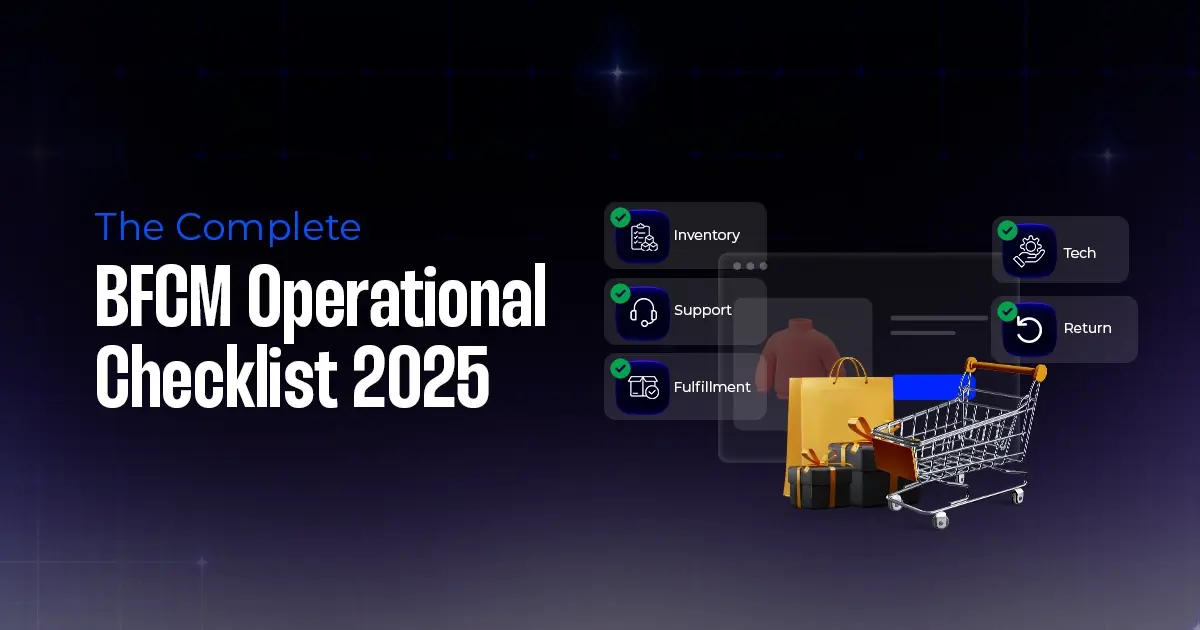Cyber Monday 2025 eCommerce Shatters Records
Reading Time: 3 minutesSummary Cyber Monday 2025 has officially become the largest online shopping day…
Google Shopping and Shopping ads, both have a lot to offer and will prove fruitful if you use them appropriately.
Well, What are we waiting for?
Let’s hop right in and learn the key differences between the two.
Now showcase products on Google Shopping for free with CedCommerce’s extended plan to upload unlimited free Shopify products at zero cost.
Psst..! as an added bonus we’ve included a few tips for you.
Did you know about the new opportunity that lets you keep all your profits to yourself? With the exclusion of commission fees from the Google Shopping Actions programs, you can enjoy all the profits made through your sales. Grab the opportunity with us today!
A lot of time while browsing, you must have come across these ads and it might have left you wondering “what are these?”
Well, these are called Shopping Ads and it usually appears at the top of the search result page.
These ads are related to your search query. (Refer to the image below).
(source: Google)
Let me paint a picture, it’s been sunny outside lately and you’ve been meaning to get sunglasses that will protect your eyes from harmful UV rays.
You simply open Google and search, “UV protected sunglasses”. Next, you are popped with these Shopping Ads results as shown above.
These ads make your shopping experience so smooth, enabling you to compare different products at the same time and giving you a crisp product description.
Why not give it a try and bring your products across a wider audience?
Give it a start! Apply to Shopping Ads through the Google Merchant Center or directly through your Google Ads account as shown below.
After setting up your account, you need to start a Shopping Ad campaign.
Specify your product description and a few other essential information regarding your business.
Shopping Ads works on PPC (pay per click) model. You simply pay when someone clicks on these Shopping Ads.
Shopping Ads is a type of Google Ads along with Text ads, banner ads, video ads, and app installation ads.
NOTE: Google ads was earlier known as Google Adwords, don’t be confused if we or anyone else uses “Google Adwords” because these terms are used interchangeably.
Don’t mix Shopping Ads with text Ads. I’ll let the following image explain it, since it is a lot easier to understand this way.

I’ve heard “2nd page of Google search is the best place to hide a dead body” Wondering why?
Because research findings show that 90% of the searchers don’t go to the 2nd page of Google results page.
So, when your ads are on top of the Google Search page, potential customers are likely to click on it.
Since potential customers generally get all the necessary details right through your Shopping Ads, they are highly likely to convert hence making a purchase.
Shopping Ads are based on a retail-centric campaign, i.e. instead of keywords, Shopping Ads uses the product feed that you submit in Google Merchant Center and show them according to the search query.
You can get all the insights, see which one of your products are performing well and which ones are not and do the necessary alterations.
Interested in selling on Google Shopping? Try our Google Shopping Actions integration app.
Google Shopping Ads account for one-fifth of retail paid search clicks
Next up,
Google Shopping basically is a comparison-shopping website. It serves both the purpose, you can sell/shop as well as compare products here.
After the recent major updates, Google Express became a crucial part of Google Shopping.
NOTE: For the ease, the “Google Express” term is no longer in use and the term used now for the marketplace is Google Shopping.
Also, Google Shopping Ads is a part of Google Shopping.
CedCommerce is a trusted partner of Google Shopping Actions.
If you wish to sell on Google Shopping then you can simply apply to the Buy On Google (previously known as Shopping Actions) program in your Merchant Center.
Well, Buy On Google is the program that lets you sell on the Google Shopping marketplace.
There you have it: The key differences between Google Shopping and Shopping Ads.
We know, it might seem confusing at first but the more you’ll learn the less scary it will get.
CedCommerce is a trusted partner of Google Shopping Actions!
If you choose our program, Google Ads and Google Analytics experts at CedCommerce will help you every step of the way.
Google Shopping Actions US is open for Merchants in India and Canada: Start selling cross-border to customers in the US, from either India or Canada without any fuss, right away.
Thank you for reading the entire blog and we hope you liked it and learned something from this.
Drop your thoughts in the comments section below and our experts will help you in any way possible.
Happy selling!~
How to sell on Google Shopping | A step-by-step Guide!

Reading Time: 3 minutesSummary Cyber Monday 2025 has officially become the largest online shopping day…

Reading Time: 2 minutesSummary Amazon kicked off December with two major developments shaping the future…

Reading Time: 2 minutesSummary Walmart has entered December with two major moves that signal a…

Reading Time: 2 minutesBlack Friday 2025 delivered the strongest U.S. eCommerce performance in history, as…

Reading Time: 13 minutesStill approaching BFCM with generic discounts, last-minute price cuts, or scattered promotions?…

Reading Time: 3 minutesTikTok Shop reached a major milestone during its largest U.S. “Global Black…

Reading Time: 3 minutesOpenAI has announced a new AI-powered shopping research tool designed to help…

Reading Time: 9 minutesIf your TikTok Shop listings often sit in review or your visibility…

Reading Time: 3 minutesAmazon has rolled out a new “Seller Challenge” feature for eligible Account…

Reading Time: 3 minutesWalmart Marketplace has sharpened its requirements around product classification (category, type group,…

Reading Time: 3 minutesJust ahead of Black Friday, Amazon is enforcing tighter controls on its…

Reading Time: 11 minutesWhere holiday prep of past years focused on legacy channels like Amazon,…

Reading Time: 11 minutesThe eCommerce shift you actually need to act on Multi-channel fulfillment has…

Reading Time: 10 minutesBlack Friday Cyber Monday (BFCM) isn’t a weekend anymore; it’s a two-month…

Reading Time: 2 minuteseBay is quietly testing a new feature that could reshape how buyers…

Reading Time: 2 minutesAmazon is stepping into a new era of value commerce with the…

Reading Time: 11 minutesThe $240 Billion BFCM Opportunity & Why Operations Matter Every seller, business,…

Reading Time: 7 minutesTL;DR — Your 60-Second BFCM Battle Plan Time remaining: 3 weeks until…

Reading Time: 2 minutesChina’s Double 11 shopping festival — the world’s largest annual online retail…

Reading Time: 2 minutesAs the holiday season approaches, TikTok Shop has released its September 2025…
the comment about the Google 2nd page had me rolling on the floor! This is such a valuable resource. I can't thank you enough for this information as I am just getting started with the various Google shop experiences they are currently offering. You really clarified it so very well ! Thank you !
Hello Mary,
Your valuable comment inspire us to go an extra mile and cover up more information that is helpful in streamlining your online selling journey. You can have a peek into other Google Shopping related blogs by visiting – https://cedcommerce.com/blog/?s=google+shopping .Here you will find stuff related to product feed, free listing, buy box, and more.
Have a great day ahead!
Leave a Reply